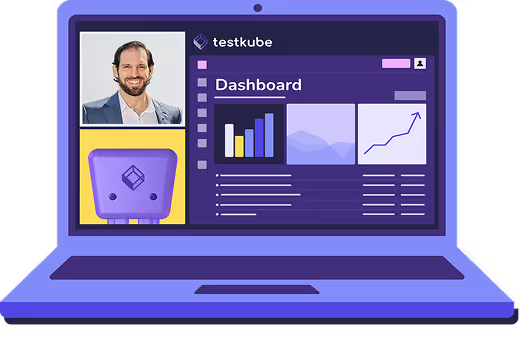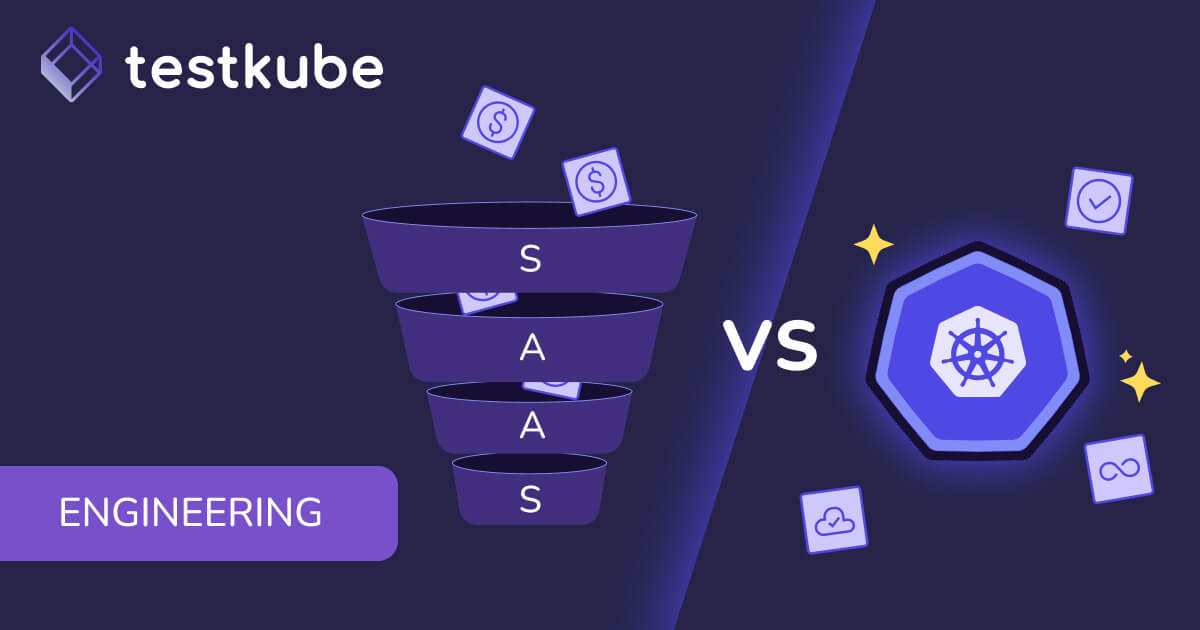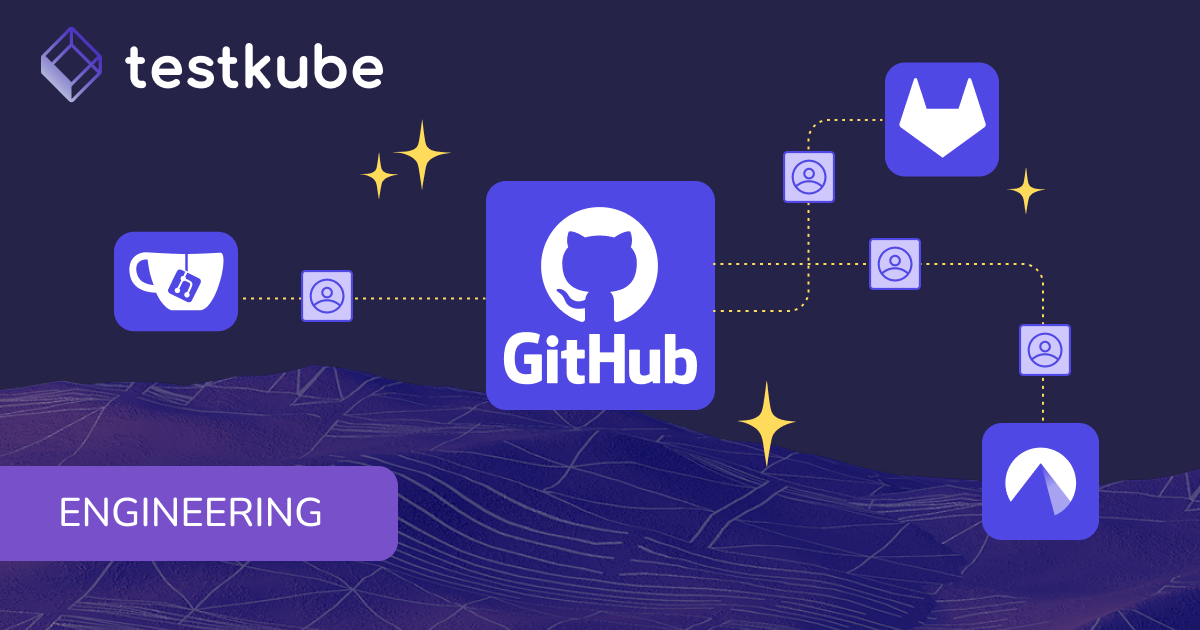

Table of Contents
Try Testkube instantly in our sandbox. No setup needed.
Try Testkube instantly in our sandbox. No setup needed.




Table of Contents
Executive Summary
A Very Expensive Convenience Trap
Your SaaS load testing bill keeps growing. Every virtual user, every test region, every spike in testing volume translates to higher costs. Meanwhile, your Kubernetes clusters sit there, powerful, scalable, distributed across regions, capable of running the exact same workloads but going unused for load testing.
If you're running production applications on Kubernetes, you already own a world class load testing platform. You're just paying someone else to recreate what you already have.
For teams scaling their release velocity while facing budget pressure, it's time to question whether external load testing platforms are solving problems or creating new ones. The infrastructure you've invested in can deliver better performance, security, and cost efficiency than any SaaS alternative.
Why Teams Ignore Kubernetes for Load Testing (And Why They Shouldn't)
Your Kubernetes clusters sit there, powerful, scalable, distributed across regions, capable of running the exact same workloads but going unused for load testing. Why?
"Kubernetes is too complex to set up for testing" Setting up load testing on raw Kubernetes means writing YAML manifests, configuring resource limits, managing pod scheduling, and orchestrating distributed test execution. Most teams don't want to become Kubernetes experts just to run load tests. This complexity barrier keeps teams paying for SaaS platforms even when they have the infrastructure capacity.
"We don't have the monitoring stack for test observability" Load testing generates massive amounts of metrics, logs, and performance data. Without proper observability infrastructure, teams can't analyze results, debug failures, or track performance trends over time. Building a comprehensive monitoring stack for testing feels like a separate project that most teams don't have bandwidth for.
"Our testing tools aren't Kubernetes-native" Legacy testing frameworks like JMeter weren't designed for containerized environments. Getting existing test scripts to run reliably in Kubernetes, handling distributed execution, and managing test artifacts requires significant tooling investment. Teams stick with familiar SaaS platforms rather than re-architect their entire testing approach.
These aren't technical limitations, they're orchestration gaps that keep powerful infrastructure underutilized while testing budgets spiral upward.
Paying More for Doing Less
SaaS load testing platforms promise simplicity but deliver complexity in your budget and your workflow.
Runaway Costs
Pay per virtual user pricing means your testing costs scale directly with your ambition. Need to simulate 10,000 concurrent users? That'll be thousands per month. Want to test from multiple regions? Each geographic location adds another line item. As your application grows and testing requirements expand, these platforms become cost centers that grow faster than your revenue.
Tool Limitations
Most platforms lock you into their preferred testing frameworks or charge premium rates for tool flexibility. Your team knows k6, but the platform pushes you toward their proprietary solution. You need custom load testing logic, but you're constrained by their workflow builder. Your testing strategy shouldn't be dictated by vendor limitations.
Security and Compliance Risks
Every load test sends your application traffic through external infrastructure. Your data, your user patterns, your performance characteristics all flowing through third party networks. For regulated industries or security conscious organizations, this external dependency creates unnecessary risk and compliance complexity.
Geographic Constraints
Need to test from Southeast Asia? Many SaaS platforms simply don't have infrastructure there. Want to simulate traffic patterns from your edge locations in Latin America or Africa? Not available. SaaS platforms are limited to their own infrastructure footprint, leaving gaps in the exact regions where your users actually are. Meanwhile, your distributed Kubernetes infrastructure already spans the locations that matter to your business.
Your Kubernetes Infrastructure Is Already a Load Testing Platform
Here's what your Kubernetes clusters can do right now:
Dynamic Scaling
Kubernetes automatically allocates resources based on demand. Need to simulate sudden traffic spikes? Your clusters can spin up hundreds of test pods, run the load test, and clean up resources automatically. The same horizontal pod autoscaling that handles your production traffic can handle your load testing workloads.
Distributed Execution
If you're running multi region Kubernetes deployments, you already have the geographic distribution that SaaS platforms charge premium rates for. Test from us-east-1, eu-west-1, and ap-southeast-1 simultaneously using infrastructure you already own and operate.
Resource Isolation
Kubernetes provides the compute isolation needed for resource intensive load tests. Run massive concurrent user simulations without impacting production workloads, using the same resource management and scheduling capabilities that keep your applications running smoothly.
Network Realism
Testing from within your own infrastructure means testing under real network conditions. Same latencies, same routing, same network policies that your production traffic experiences. No artificial network hops through external testing infrastructure.
How Testkube Transforms Kubernetes into Your Load Testing Control Center
Testkube is a cloud native continuous testing platform that bridges the gap between having powerful infrastructure and using it effectively for load testing. Testkube provides the vendor agnostic orchestration layer that makes on premise load testing as simple as clicking "run test."
Tool Flexibility Without Vendor Lock in
Continue using the load testing tools your team already knows k6, JMeter, Gatling, Playwright, Blazemeter, LoadRunner, NeoLoad,or custom scripts. Testkube's vendor agnostic approach orchestrates any testing framework within your Kubernetes environment. Switch tools, combine approaches, or build custom workflows without platform constraints.
Cloud Native Scaling That Keeps Pace
Testkube leverages Kubernetes' native capabilities for test distribution and scaling. Need to run a million virtual users? Testkube automatically shards your test across multiple pods, coordinates execution, and aggregates results. Matrix execution lets you test multiple scenarios simultaneously, and parallel workflows maximize your cluster utilization while keeping up with AI driven release cycles.
Intelligent Test Triggering
Move beyond manual test execution. Testkube integrates with your existing CI/CD pipelines, triggers tests on schedule, or responds to Kubernetes events like deployments or configuration changes. Your load testing becomes as automated as your application deployments.
Unified Observability
All test results, logs, and artifacts flow into a centralized dashboard regardless of which tools executed the tests or which clusters they ran on. Debug failed tests, analyze performance trends, and share results across teams without hunting through multiple systems.
On Premise by Design
Deploy Testkube entirely within your own infrastructure. Connect clusters from AWS, GCP, Azure, or edge locations to a single control plane that never leaves your environment. Orchestrate load tests that span continents, using your existing infrastructure footprint. No additional regional fees, no traffic routing through external networks.
The Economics Make Sense
- Immediate Cost Reduction Eliminate per virtual user fees, regional surcharges, and usage based pricing. Your Kubernetes infrastructure costs are already fixed adding load testing workloads uses existing capacity more efficiently.
- Security Dividend Keep all test traffic within your controlled infrastructure. Reduce compliance complexity, eliminate external data flows, and maintain the same security posture for testing that you maintain for production.
- Performance Authenticity Load tests that run in the same network environment as production applications provide more accurate performance insights. Real latencies, real routing, real infrastructure constraints.
- Operational Consistency Use the same deployment patterns, monitoring tools, and operational procedures for load testing that you use for production workloads. Your team's Kubernetes expertise applies directly to testing operations.
A Practical Migration Path
- Start with Parallel Operation Connect your existing Kubernetes clusters to Testkube while maintaining your current SaaS load testing setup. Run identical tests on both platforms to validate results and build confidence.
- Import Existing Scripts Your k6 scripts, JMeter test plans, and custom load testing code work unchanged in Testkube. No rewriting, no platform specific adaptations required.
- Gradual Cost Reduction Migrate test workloads incrementally. Start with development and staging load tests, then move production validation tests as your team builds operational confidence.
- Keep SaaS for Edge Cases Use Testkube for 80 to 90 percent of your load testing needs while keeping SaaS platforms for specialized requirements like real device testing or different geographic locations.
Getting Started Is Straightforward
The path from SaaS load testing bills to Kubernetes native testing starts with connecting your clusters to Testkube's control plane. Import your existing test scripts, trigger your first workflow, and see immediate results all while your SaaS platform remains available as backup.
Your infrastructure investment has already paid for the foundation. Testkube provides the cloud native orchestration layer that turns that investment into a competitive advantage.
Ready to see your infrastructure's testing potential? Book a demo and see how teams are cutting their load testing costs while gaining better performance insights, security, and control. Your Kubernetes infrastructure is ready, let us show you how to unlock its testing potential.
FAQs


About Testkube
Testkube is a cloud-native continuous testing platform for Kubernetes. It runs tests directly in your clusters, works with any CI/CD system, and supports every testing tool your team uses. By removing CI/CD bottlenecks, Testkube helps teams ship faster with confidence.
Explore the sandbox to see Testkube in action.






